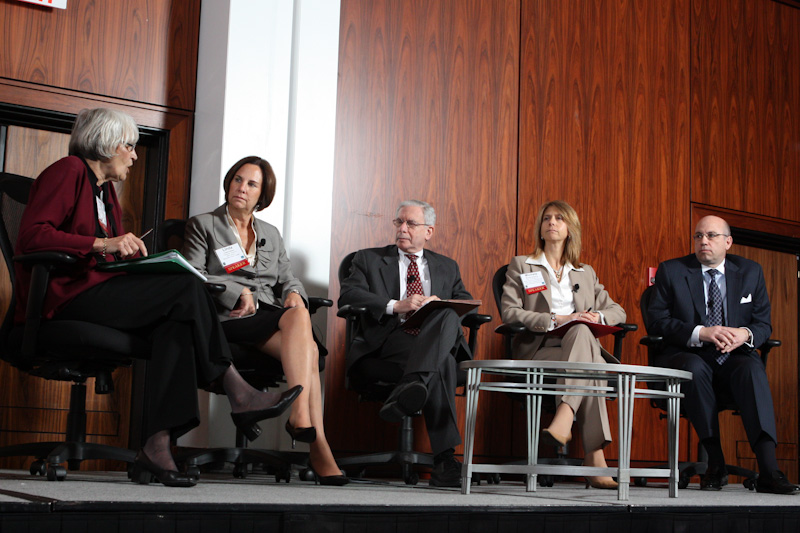New Jersey Future Blog
NJ Can Brighten its Future by Stretching Stimulus Dollars
January 15th, 2009 by Jay Corbalis
- President-elect Barack Obama has called for “the largest investment in infrastructure since the creation of the interstate highway system” to be a part of the forthcoming economic stimulus package. The price tag for this stimulus could approach $1 trillion.
- Much of the infrastructure money is expected to be funneled to state departments of transportation to be used for “ready-to-go” projects. Many states are in the process of preparing lists of projects that could be funded with federal money. An analysis of 19 of these lists by the advocacy group Transportation for America indicates that many states are favoring large, new highway projects, rather than maintenance and transit.
- A 2007 Report Card by the American Society for Civil Engineers gave New Jersey’s roads and bridges a grade of D. The report classifies 49 percent of the state’s roads and 35 percent of bridges as deficient or structurally obsolete.
Fix It First, Go Green, Promote Redevelopment
In an effort to jump-start the national economy and stave off a deepening recession, the incoming Obama administration has proposed a massive federal stimulus package. Though the details are still being worked out, it is clear that the package will include billions of dollars for “shovel-ready” infrastructure projects. In addition to providing a spark for the national economy, Gov. Jon Corzine told the House Appropriations Committee that projects funded by the federal stimulus should also “conform with our broader policy goals: creating green industries, cutting greenhouse gases, reducing our dependency on foreign oil and modernizing our educational facilities.”
For New Jersey, wise investment of the proposed federal stimulus dollars will not only stimulate the economy in the short term, but also position the state for long-term economic and environmental sustainability. In a letter to the state’s congressional delegation, New Jersey Future Executive Director Peter Kasabach described three “screens” that should be applied to stimulus dollars to ensure that the money will have the greatest possible impact, now and in the future:
- Fix-it-first: More than 700 bridges in New Jersey were identified in 2006 as either structurally deficient or functionally obsolete, and many more roads and bridges need to be upgraded. Repairing, maintaining and upgrading the existing transportation network, and ensuring that all roads, rails and bridges are safe, should be the state’s top priority.
- Invest in “greener” modes of transportation: New Jersey is already blessed with an extensive public transportation system. In the years to come, as the state seeks to reduce its dependence on foreign oil and meet its greenhouse gas reduction goals, this system will need to be improved and expanded. Making strategic investments now in rail, bus and light rail service, in bicycle paths and pedestrian walkways, will position New Jersey to provide the most efficient and environmentally sustainable transportation system that connects people with jobs.
- Promote Redevelopment: In New Jersey, which has already developed a larger percentage of its land than any other state, using stimulus funds to extend infrastructure to undeveloped portions of the state would be wasteful and irresponsible. Instead, funds should be used to encourage redevelopment in already developed areas, as prescribed by the State Development and Redevelopment Plan.
There is reason to be optimistic about New Jersey’s potential use of the stimulus funds. In the recent past, the state Department of Transportation has had a good track record on capital expenditures, favoring “fix-it-first” projects and investments in transit over roadway widenings. Still, a 2008 report by the Tri-State Transportation Campaign, titled Trouble Ahead? Tracking NJDOT’s Priorities, sounds a cautionary note. In the coming years, the percent of the DOT’s capital budget for new roads and widenings is projected to increase dramatically. Putting large portions of the stimulus money toward these sorts of projects would perpetuate our dependence on foreign oil and counteract New Jersey’s statutory commitment to lower greenhouse gas emissions. By spending stimulus dollars to promote more efficient means of mobility, while helping ensure that our existing network is as safe as possible, New Jersey will chart a clearer, wiser path toward a sustainable and secure future.
If you have any questions about this issue of Future Facts, please contact Jay Corbalis, Policy Analyst.
















